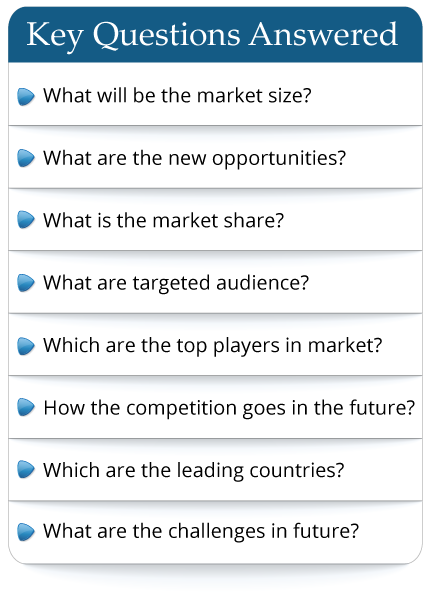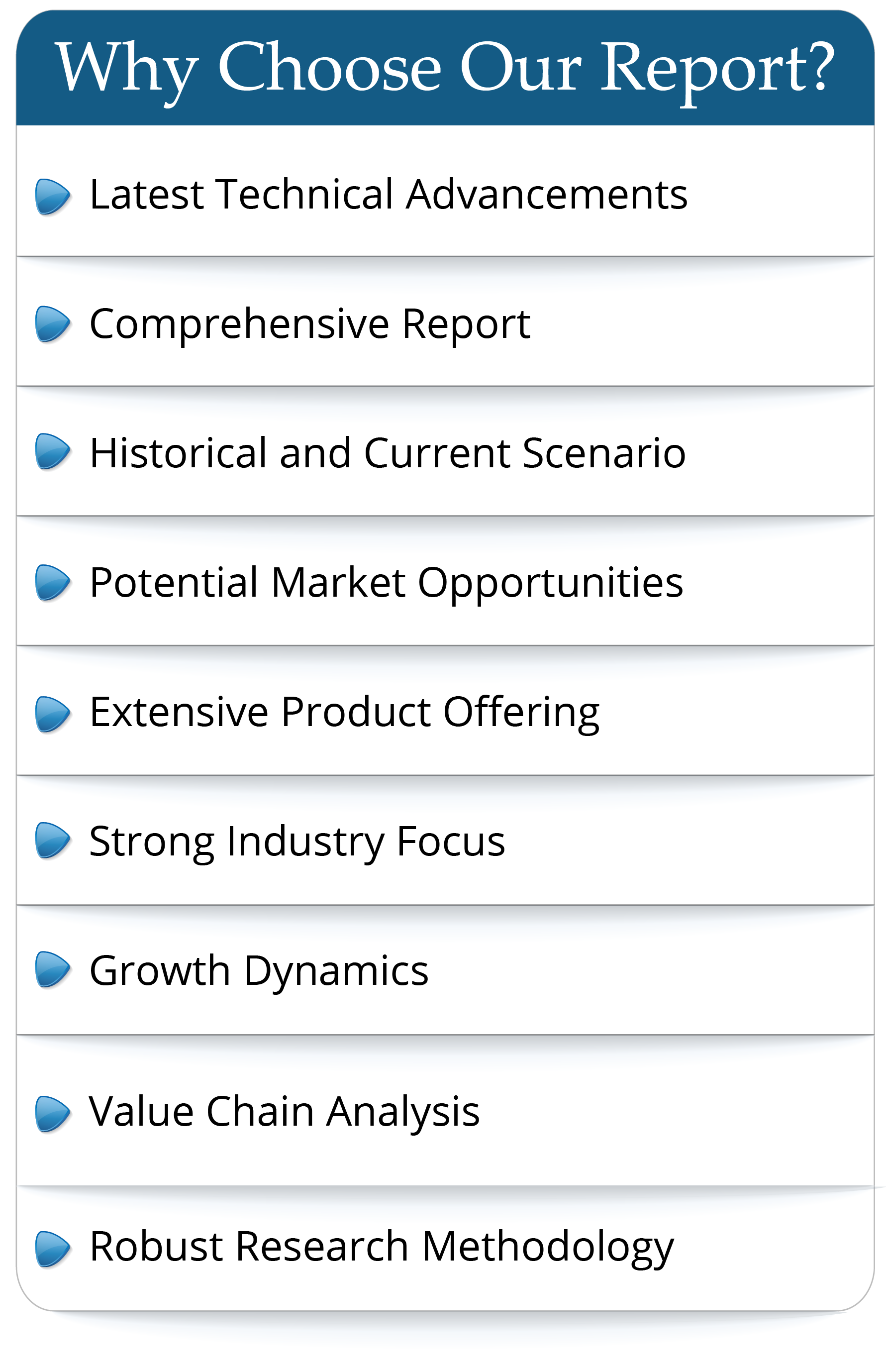According to the latest research, the global Meat Substitute market size was valued at USD 6191.35 million in 2022 and is expected to expand at a CAGR of 8.08% during the forecast period, reaching USD 9870.06 million by 2028.
A meat substitute, also called a meat analogue, approximates certain aesthetic qualities (primarily texture, flavor and appearance) or chemical characteristics of a specific meat. Substitutes are often based on soybeans (such as tofu and tempeh), gluten, or peas.
The government's swift action and consumers' attention to health issues
Industrialized animal husbandry is affecting the environment and animal welfare, forcing governments around the world to take measures to address issues related to meat consumption and its adverse effects. The continued epidemic of COVID-19 has further led to strict regulations on meat consumption. Therefore, swift action by the government and consumers' attention to health issues are the main factors affecting the growth of the global meat substitute market. Because for health and environmental reasons, consumers are increasingly inclined to consume plant-based protein. Fast food giants are strongly inclined to invest in this industry. For example, KFC, a fast-food chain in the United States is considering offering a variety of products to include plant-based chicken substitutes. American meat substitute manufacturers produce products to mimic chicken, beef and pork sausages.
Impacts from the long-term
In the long run, in the face of the complex and unpredictable epidemic of COVID-19, meat substitutes are commodities with huge potential for growth. In the context that COVID-19 has not slowed down worldwide, this is the best solution to increase the export value of processed products and drive the export value of the entire food. Meat substitutes have a longer storage time, which helps reduce the impact of the COVID-19 epidemic. Therefore, when the epidemic is under control, the development of the meat substitute market will show an upward trend.
Robust Popularity of veganism to Support the Growth of the Meat Substitute Market
The global market for meat substitute is fueled by the growing inclination of consumers towards plant-based (vegan) dietary patterns. Meat consumption in the developed markets of Western Europe and North America is gradually declining amidst publication of various studies linking overconsumption of red processed meat to a variety of non-communicable diseases such as cancer, heart disease, stroke, diabetes, liver disease, lung disease, and kidney disease. The meat substitutes market has also witnessed popularity among flexitarian' consumers who still consume meat and dairy but seek to reduce the levels of animal meat. Such consumers are often driven to plant-based meat products because of ethical, environmental and health concerns.
Public perception regarding a meat substitute as having a low nutritional value
Old age perception dictates that meat is a source of high-value nutrients such as proteins, minerals, and amino acids. This essentially makes meat-substitutes appear to be less beneficial for health. In countries such as China, the United States (US), and Indonesia, consuming meat is a part of the daily diet and has been a long-standing tradition. This makes it hard for companies to market meat substitutes in these geographies.
Highly processed meat alternatives considered unhealthy
Consumers nowadays prefer healthy and organic food over processed options. Meat substitutes like seitan, Quorn, and tempeh are highly processed food items and hence are often considered unhealthy. This leads consumers to often opt for vegetables, legumes, and pulses rather than meat substitutes for their protein-requirements.
Extensive R&D and innovation
To satiate consumers eager to be vegetarians, companies are investing in R&D to bring meat products that look and taste similar to meat. These companies are constantly raising the quality standards, and successfully appealing to the meat-eater segment while inspiring the overall growth of plant-based food products. For instance, brands like Beyond Meat and Impossible Foods did their due R&D while developing their meat substitute products to ensure it looks and tastes exactly like meat.
Region Overview:
In 2022, the share of the Meat Substitute market in Europe stood at 37.26%.
Company Overview:
MorningStar Farms is one of the major players operating in the Meat Substitute market, holding a share of 6.93% in 2023.
MorningStar Farms
MorningStar Farms is a producer and seller of vegetarian frozen food products. The company offers a host of frozen food products such as meatless burger and chicken patties, veggie dogs, sausage and related meatless products.
Beyond Meat
Beyond Meat is a Los Angeles manufacturer of 100% plant-based meat substitutes. Since 2013, the company's products have been available in Whole Foods supermarkets across the United States.
Segmentation Overview:
By type, Soybean Based segment accounted for the largest share of market in 2022.
Application Overview:
The market's largest segment by application is the segment Burger, with a market share of 33.51% in 2022.
This report elaborates on the market size, market characteristics, and market growth of the Meat Substitute industry between the year 2018 to 2028, and breaks down according to the product type, downstream application, and consumption area of Meat Substitute. The report also introduces players in the industry from the perspective of the value chain and looks into the leading companies.
Key Points this Global Meat Substitute Market Report Include:
Market Size Estimates: Meat Substitute market size estimation in terms of revenue and sales from 2018-2028
Market Dynamic and Trends: Meat Substitute market drivers, restraints, opportunities, and challenges
Macro-economy and Regional Conflict: Influence of global inflation and Russia & Ukraine War on the Meat Substitute market
Segment Market Analysis: Meat Substitute market revenue and sales by type and by application from 2018-2028
Regional Market Analysis: Meat Substitute market situations and prospects in major and top regions and countries
Meat Substitute Market
Meat Substitute Industry Chain: Meat Substitute market raw materials & suppliers, manufacturing process, distributors by region, downstream customers
Meat Substitute Industry News, Policies by regions
Meat Substitute Industry Porters Five Forces Analysis
Key players in the global Meat Substitute market are covered in Chapter 2:
Garden Protein International
Quorn Foods
Beyond Meat
Impossible Foods
Amy's Kitchen
MorningStar Farms
VBites
Tofurky
Meatless
LightLife
Field Roast
In Chapter 6 and Chapter 9, on the basis of types, the Meat Substitute market from 2018 to 2028 is primarily split into:
Soybean Based
Other Beans Except for Soybean
Wheat Based
Fungus
Dairy Based Meat Replacers
Vegetable Based Excluding Beans
Others
In Chapter 7 and Chapter 10, on the basis of applications, the Meat Substitute market from 2018 to 2028 covers:
Burger
Ball
Nugget
Sausage
Schnitzel
Minced Meat
Others
Geographically, the detailed analysis of consumption, revenue, market share and growth rate of the following regions from 2018 to 2028 are covered in Chapter 8 and Chapter 11:
United States
Europe
China
Japan
India
Southeast Asia
Latin America
Middle East and Africa
Others
In summary, this report relies on sources from both primary and secondary, combines comprehensive quantitative analysis with detailed qualitative analysis, and pictures the market from a macro overview to micro granular segment aspects. Whatever your role in this industry value chain is, you should benefit from this report with no doubt.
Chapter Outline
This report consists of 12 chapters. Below is a brief guideline to help you quickly grasp the main contents of each chapter:
Chapter 1 first introduces the product overview, market scope, product classification, application, and regional division, and then summarizes the global Meat Substitute market size in terms of revenue, sales volume, and average price.
Chapter 2 analyzes the main companies in the Meat Substitute industry, including their main businesses, products/services, sales, prices, revenue, gross profit margin, and the latest developments/updates.
Chapter 3 is an analysis of the competitive environment of Meat Substitute market participants. This mainly includes the revenue, sales, market share, and average price of the top players, along with the market concentration ratio in 2022 and the players' M&A and expansion in recent years.
Chapter 4 is an analysis of the Meat Substitute industrial chain, including raw material analysis, manufacturing cost structure, distributors, and major downstream buyers.
Chapter 5 focuses on Meat Substitute market dynamics and marketing strategy analysis, which include opportunities, challenges, industry development trends under inflation, industry news and policies analyzed by region, Porter's Five Forces analysis, as well as direct and indirect marketing, and the development trends of marketing channels.
Chapters 6-8 have segmented the Meat Substitute market by type, application, and region, with a focus on sales and value from 2018 to 2023 from both vertical and horizontal perspectives.
Chapters 9-11 provide detailed Meat Substitute market forecast data for 2023-2028, broken down by type and application, region, and major countries to help understand future growth trends.
Chapter 12 concludes with an explanation of the data sources and research methods. Verify and analyze through preliminary research to obtain final quantitative and qualitative data.
2022
A meat substitute, also called a meat analogue, approximates certain aesthetic qualities (primarily texture, flavor and appearance) or chemical characteristics of a specific meat. Substitutes are often based on soybeans (such as tofu and tempeh), gluten, or peas.
The government's swift action and consumers' attention to health issues
Industrialized animal husbandry is affecting the environment and animal welfare, forcing governments around the world to take measures to address issues related to meat consumption and its adverse effects. The continued epidemic of COVID-19 has further led to strict regulations on meat consumption. Therefore, swift action by the government and consumers' attention to health issues are the main factors affecting the growth of the global meat substitute market. Because for health and environmental reasons, consumers are increasingly inclined to consume plant-based protein. Fast food giants are strongly inclined to invest in this industry. For example, KFC, a fast-food chain in the United States is considering offering a variety of products to include plant-based chicken substitutes. American meat substitute manufacturers produce products to mimic chicken, beef and pork sausages.
Impacts from the long-term
In the long run, in the face of the complex and unpredictable epidemic of COVID-19, meat substitutes are commodities with huge potential for growth. In the context that COVID-19 has not slowed down worldwide, this is the best solution to increase the export value of processed products and drive the export value of the entire food. Meat substitutes have a longer storage time, which helps reduce the impact of the COVID-19 epidemic. Therefore, when the epidemic is under control, the development of the meat substitute market will show an upward trend.
Robust Popularity of veganism to Support the Growth of the Meat Substitute Market
The global market for meat substitute is fueled by the growing inclination of consumers towards plant-based (vegan) dietary patterns. Meat consumption in the developed markets of Western Europe and North America is gradually declining amidst publication of various studies linking overconsumption of red processed meat to a variety of non-communicable diseases such as cancer, heart disease, stroke, diabetes, liver disease, lung disease, and kidney disease. The meat substitutes market has also witnessed popularity among flexitarian' consumers who still consume meat and dairy but seek to reduce the levels of animal meat. Such consumers are often driven to plant-based meat products because of ethical, environmental and health concerns.
Public perception regarding a meat substitute as having a low nutritional value
Old age perception dictates that meat is a source of high-value nutrients such as proteins, minerals, and amino acids. This essentially makes meat-substitutes appear to be less beneficial for health. In countries such as China, the United States (US), and Indonesia, consuming meat is a part of the daily diet and has been a long-standing tradition. This makes it hard for companies to market meat substitutes in these geographies.
Highly processed meat alternatives considered unhealthy
Consumers nowadays prefer healthy and organic food over processed options. Meat substitutes like seitan, Quorn, and tempeh are highly processed food items and hence are often considered unhealthy. This leads consumers to often opt for vegetables, legumes, and pulses rather than meat substitutes for their protein-requirements.
Extensive R&D and innovation
To satiate consumers eager to be vegetarians, companies are investing in R&D to bring meat products that look and taste similar to meat. These companies are constantly raising the quality standards, and successfully appealing to the meat-eater segment while inspiring the overall growth of plant-based food products. For instance, brands like Beyond Meat and Impossible Foods did their due R&D while developing their meat substitute products to ensure it looks and tastes exactly like meat.
Region Overview:
In 2022, the share of the Meat Substitute market in Europe stood at 37.26%.
Company Overview:
MorningStar Farms is one of the major players operating in the Meat Substitute market, holding a share of 6.93% in 2023.
MorningStar Farms
MorningStar Farms is a producer and seller of vegetarian frozen food products. The company offers a host of frozen food products such as meatless burger and chicken patties, veggie dogs, sausage and related meatless products.
Beyond Meat
Beyond Meat is a Los Angeles manufacturer of 100% plant-based meat substitutes. Since 2013, the company's products have been available in Whole Foods supermarkets across the United States.
Segmentation Overview:
By type, Soybean Based segment accounted for the largest share of market in 2022.
Application Overview:
The market's largest segment by application is the segment Burger, with a market share of 33.51% in 2022.
This report elaborates on the market size, market characteristics, and market growth of the Meat Substitute industry between the year 2018 to 2028, and breaks down according to the product type, downstream application, and consumption area of Meat Substitute. The report also introduces players in the industry from the perspective of the value chain and looks into the leading companies.
Key Points this Global Meat Substitute Market Report Include:
Market Size Estimates: Meat Substitute market size estimation in terms of revenue and sales from 2018-2028
Market Dynamic and Trends: Meat Substitute market drivers, restraints, opportunities, and challenges
Macro-economy and Regional Conflict: Influence of global inflation and Russia & Ukraine War on the Meat Substitute market
Segment Market Analysis: Meat Substitute market revenue and sales by type and by application from 2018-2028
Regional Market Analysis: Meat Substitute market situations and prospects in major and top regions and countries
Meat Substitute Market
Competitive Landscape
and Major Players: Analysis of 10-15 leading market players, sales, price, revenue, gross, gross margin, product/service profile and recent development/updates, etc.Meat Substitute Industry Chain: Meat Substitute market raw materials & suppliers, manufacturing process, distributors by region, downstream customers
Meat Substitute Industry News, Policies by regions
Meat Substitute Industry Porters Five Forces Analysis
Key players in the global Meat Substitute market are covered in Chapter 2:
Garden Protein International
Quorn Foods
Beyond Meat
Impossible Foods
Amy's Kitchen
MorningStar Farms
VBites
Tofurky
Meatless
LightLife
Field Roast
In Chapter 6 and Chapter 9, on the basis of types, the Meat Substitute market from 2018 to 2028 is primarily split into:
Soybean Based
Other Beans Except for Soybean
Wheat Based
Fungus
Dairy Based Meat Replacers
Vegetable Based Excluding Beans
Others
In Chapter 7 and Chapter 10, on the basis of applications, the Meat Substitute market from 2018 to 2028 covers:
Burger
Ball
Nugget
Sausage
Schnitzel
Minced Meat
Others
Geographically, the detailed analysis of consumption, revenue, market share and growth rate of the following regions from 2018 to 2028 are covered in Chapter 8 and Chapter 11:
United States
Europe
China
Japan
India
Southeast Asia
Latin America
Middle East and Africa
Others
In summary, this report relies on sources from both primary and secondary, combines comprehensive quantitative analysis with detailed qualitative analysis, and pictures the market from a macro overview to micro granular segment aspects. Whatever your role in this industry value chain is, you should benefit from this report with no doubt.
Chapter Outline
This report consists of 12 chapters. Below is a brief guideline to help you quickly grasp the main contents of each chapter:
Chapter 1 first introduces the product overview, market scope, product classification, application, and regional division, and then summarizes the global Meat Substitute market size in terms of revenue, sales volume, and average price.
Chapter 2 analyzes the main companies in the Meat Substitute industry, including their main businesses, products/services, sales, prices, revenue, gross profit margin, and the latest developments/updates.
Chapter 3 is an analysis of the competitive environment of Meat Substitute market participants. This mainly includes the revenue, sales, market share, and average price of the top players, along with the market concentration ratio in 2022 and the players' M&A and expansion in recent years.
Chapter 4 is an analysis of the Meat Substitute industrial chain, including raw material analysis, manufacturing cost structure, distributors, and major downstream buyers.
Chapter 5 focuses on Meat Substitute market dynamics and marketing strategy analysis, which include opportunities, challenges, industry development trends under inflation, industry news and policies analyzed by region, Porter's Five Forces analysis, as well as direct and indirect marketing, and the development trends of marketing channels.
Chapters 6-8 have segmented the Meat Substitute market by type, application, and region, with a focus on sales and value from 2018 to 2023 from both vertical and horizontal perspectives.
Chapters 9-11 provide detailed Meat Substitute market forecast data for 2023-2028, broken down by type and application, region, and major countries to help understand future growth trends.
Chapter 12 concludes with an explanation of the data sources and research methods. Verify and analyze through preliminary research to obtain final quantitative and qualitative data.
Years considered for this report:
Historical Years:
2018-2022Base Year:
2022Estimated Year:
2023Forecast Period:
2023-2028Frequently Asked Questions
This market study covers the global and regional market with an
in-depth analysis of the
overall growth prospects...
- By product type
- By End User/Applications
- By Technology
- By Region
The report provides a detailed evaluation of the market by
highlighting information on
different aspects including drivers, restraints...

 Pre-order Enquiry
Pre-order Enquiry Download Free Sample
Download Free Sample












